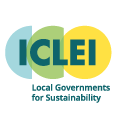Austin’s economy has been largely based on government and the University of Texas, one of the most prominent seats of higher education in the United States. Austin has a vibrant and diverse music scene, with dozens of small local venues, and is known as the “Live Music Capitol of the World.” Austin has an eclectic vibe, and the City slogan is “Keep Austin Weird.” In the late 1990s the tech industry discovered Austin. Within the last few years alone, companies such as Tesla, Samsung, and Meta are either locating, expanding, or planning to locate to Austin. Austin’s population grew from 345,890 in 1980 to one million people today. Several hundred new people continue to move to Austin daily, and Austin currently grapples with affordability and housing crises. Lower and middle class individuals are being pushed out to the ex-urbs, leading to long and expensive commutes into Austin for work.
Racism is a part of Austin’s history. Austin’s Master Plan of 1928 divided the City along racial lines, and 20th century segregationist policies affected a range of Austin venues, including schools, public parks, and commercial businesses. Despite these challenges, communities of color in Austin thrived and developed strong and close knit communities.
Today the Austin community and City government are actively working to remodel and rethink the work of the city, based on equity and recreating the City in a more just way. The City’s Equity Office can be accessed here. Austin actively works to place equity at the center of policy and programming, including climate protection, sustainability, and resilience work. This commitment is evident in Austin’s Climate Equity Plan, adopted in 2021. This plan includes the bold and aggressive goal of equitably reaching net-zero community-wide greenhouse gas emissions by 2040 with a strong emphasis on cutting emissions by 2030.
Sustainability Challenges
Austin is keenly aware that while climate change affects everyone, the impacts are not felt equally among all communities. Low-income communities and communities of color are disproportionately burdened.
The Austin Climate Equity Plan sets goals across five focus areas:
- Sustainable Buildings
Buildings in Austin are responsible for about 50% of our emissions. We can make strides in reducing our building-related emissions by decarbonizing buildings, addressing refrigerant use and leakage, and more sustainably managing construction materials. But improving our buildings isn’t just about reducing emissions. It’s also important to address indoor air quality and the energy cost of using our homes and commercial spaces.
- Affordable Housing & Land Use
Where our residents live, work, and play and how they move around our city greatly impact our community-wide emissions. Coordinated transportation and land use strategies combined with intentional anti-displacement strategies can improve access to greener forms of transportation, create more affordable housing, and reduce greenhouse gas emissions while supporting diverse communities. Our vision is to cultivate a person-centered mobility network that meets the needs of low-income communities and communities of color of all ages and abilities.
- Sustainable Mobility
In Austin, our transportation system will soon become the largest emitter of greenhouse gases and is already the primary source of local air pollution. The vast majority of these transportation-related emissions are caused by private cars and trucks. This means that to meet our emissions reduction targets, we will need to have more people using sustainable forms of transportation, including private vehicles powered by renewable energy.
- Food and Consumption
To fully account for the emissions of the food and products we consume, we need to consider the raw material extraction, consumption, and eventual disposal or reuse of a product—regardless of where those activities occur. Many of the products we consume locally have a global emissions impact. When it comes to the goods and foods we consume, we can create more efficient, circular processes that improve quality of life and restore human and planetary health.
- Natural Systems Preservation
Natural systems are all around us and they offer a multitude of health and quality of life benefits for our residents. Most of Austin’s protected natural areas are in the west, while East Austin has taken on much of the burden of the city’s growth and development. Tree cover also varies significantly between the two sides of town. Historically, these issues could have been attributed to geological and ecological differences, but that should no longer be a reason to neglect investments in natural systems in East Austin. Protecting and preserving our natural systems is an investment in our community’s health, livelihood, and culture.
Austin created its climate plan through the lens of racial equity, learning from people in the community while exploring solutions to the climate crisis. The plan was created with input from nearly 200 community members. This engaged racially and economically diverse residents about the challenges, barriers, and opportunities facing historically excluded groups. Our Community Climate Ambassadors were mobilized to engage people on climate-related topics and provide feedback on potential strategies. Each strategy in the plan was evaluated through an equity tool that accounts for outcomes related to health, affordability, accessibility, community capacity, cultural preservation, accountability, and a just transition to green jobs.
Equity Tool Equity Climate Plan

